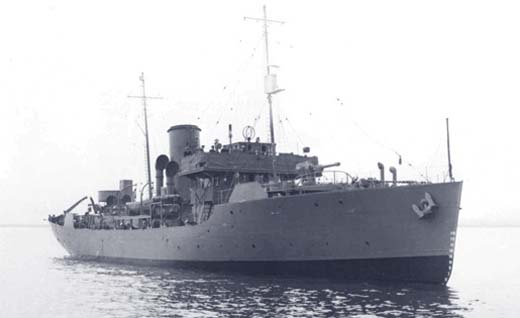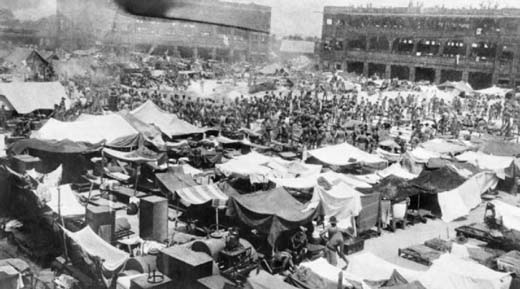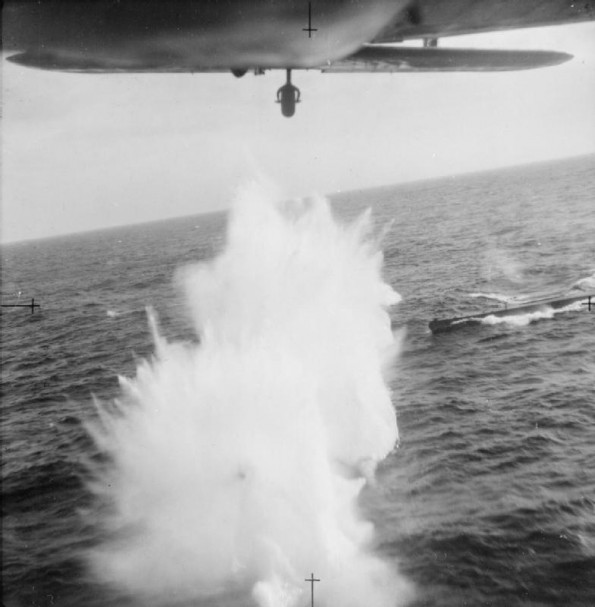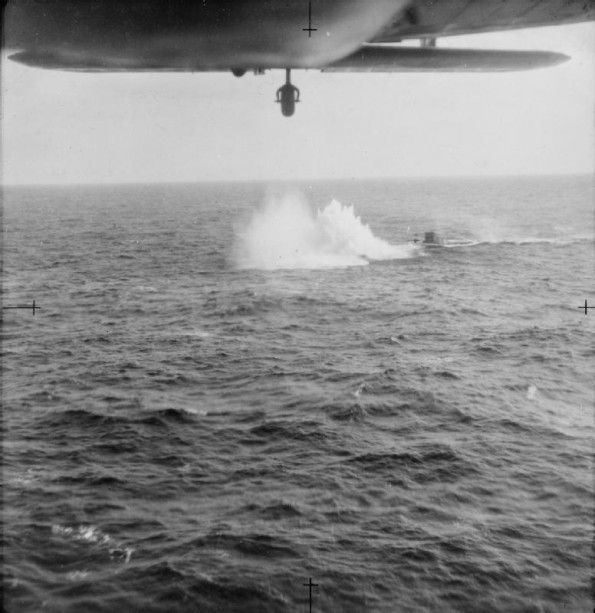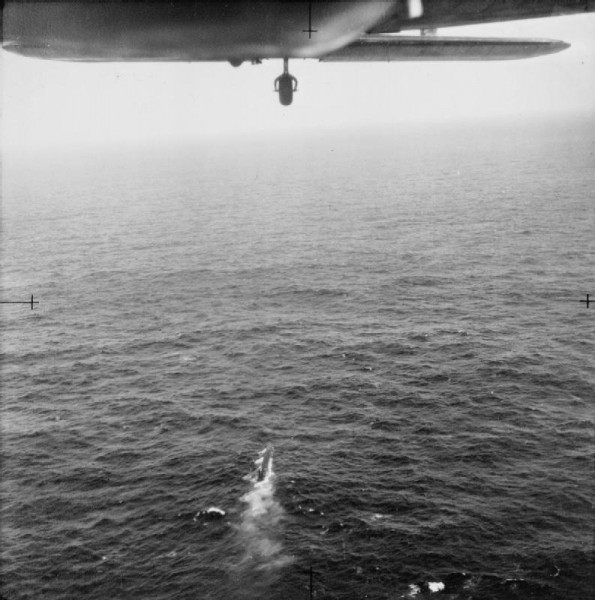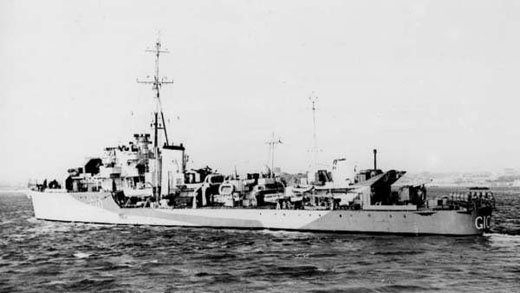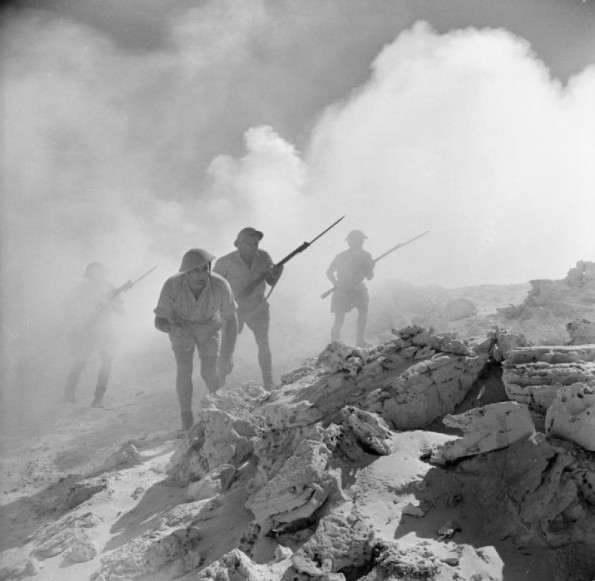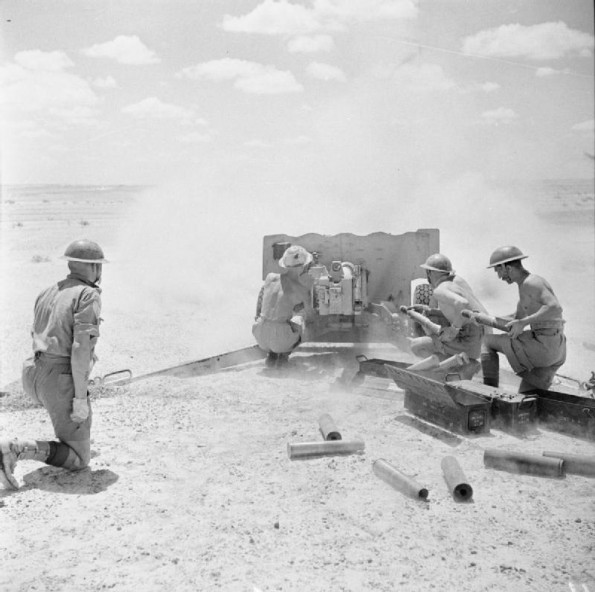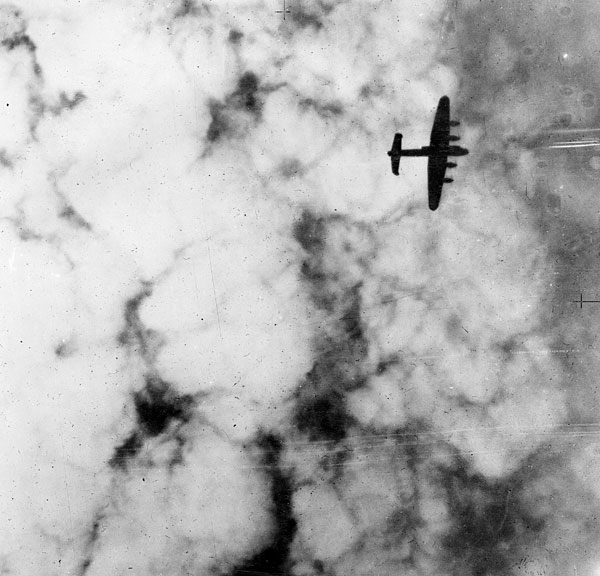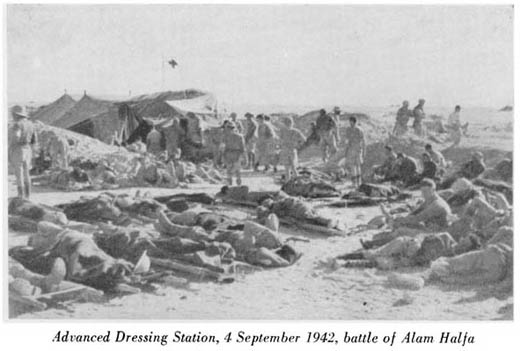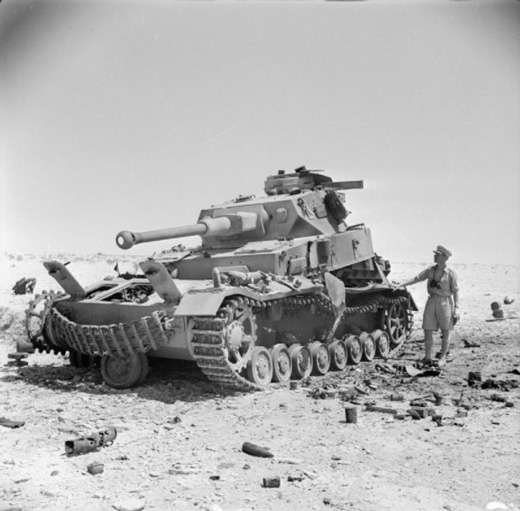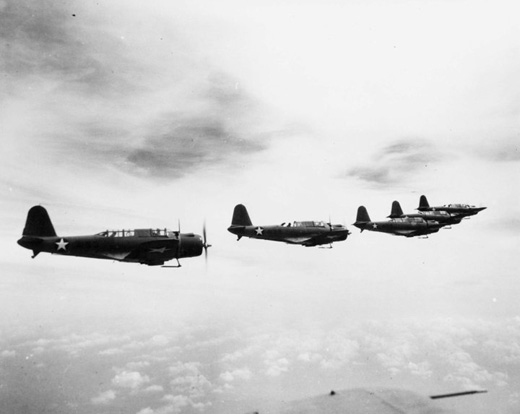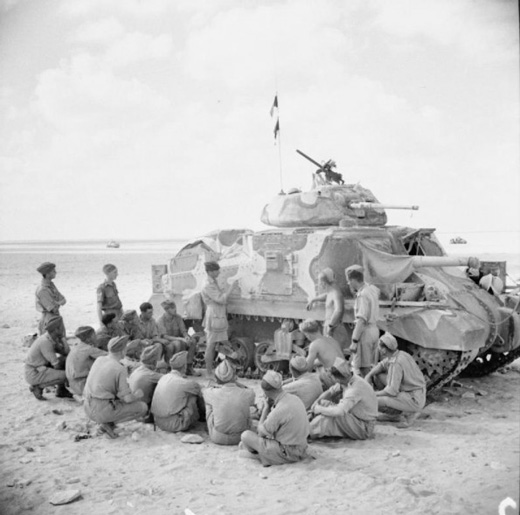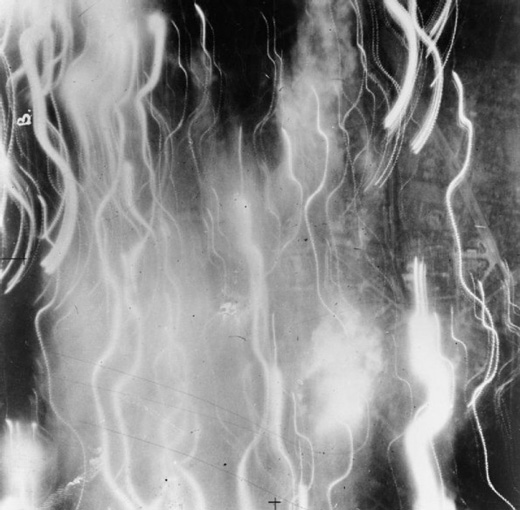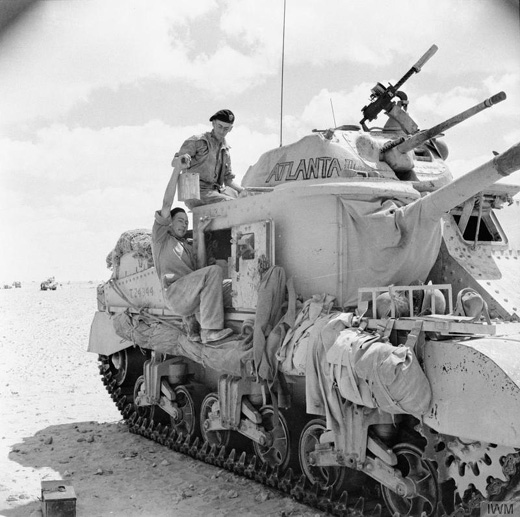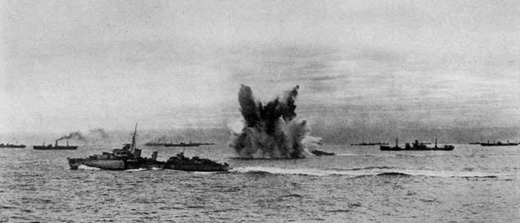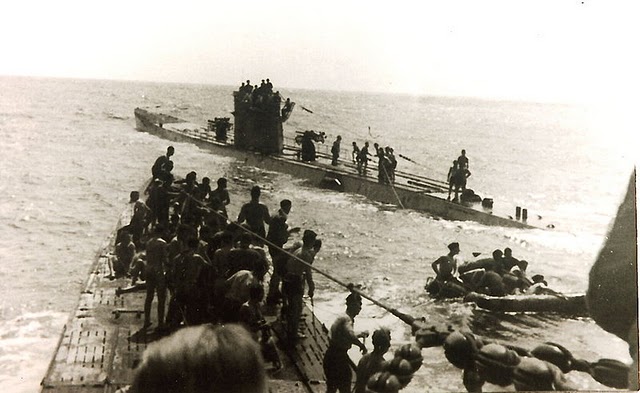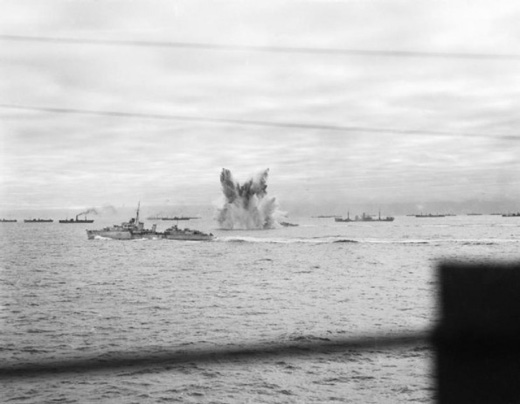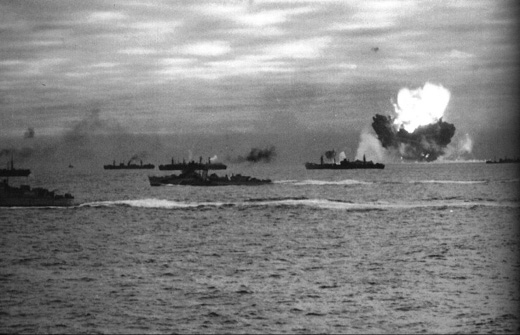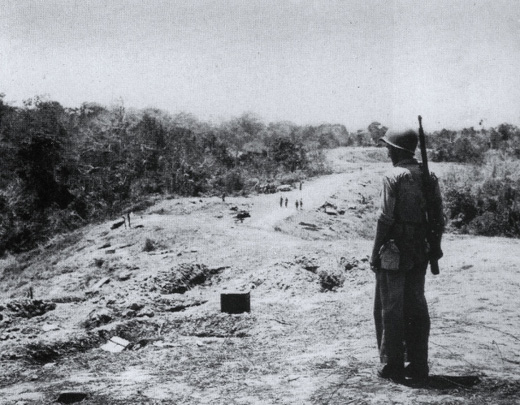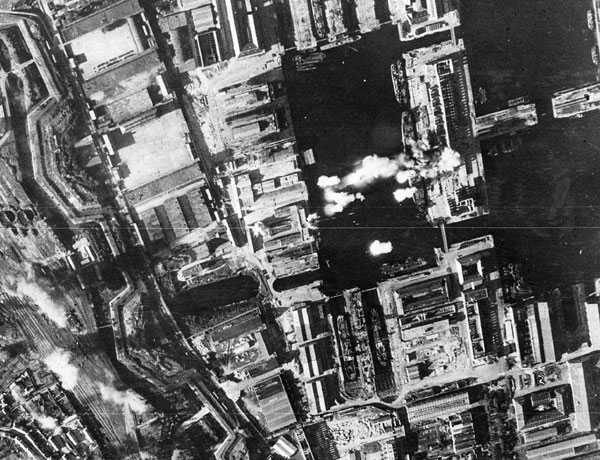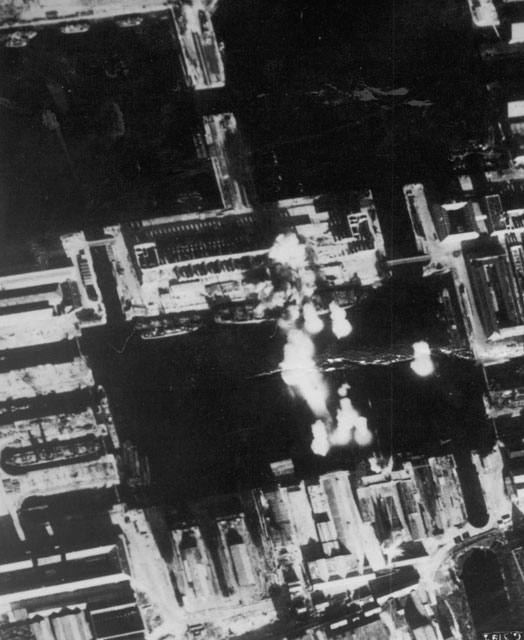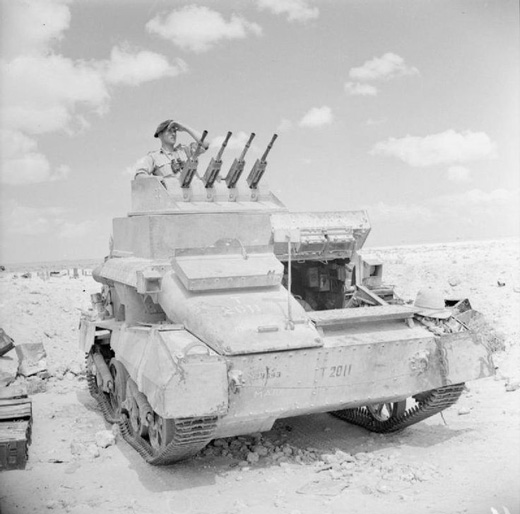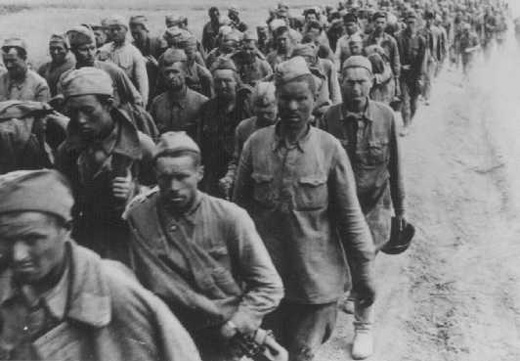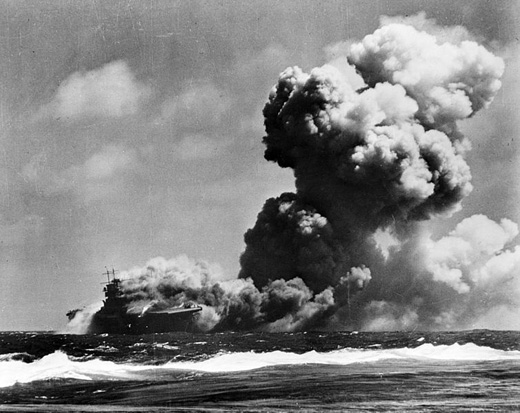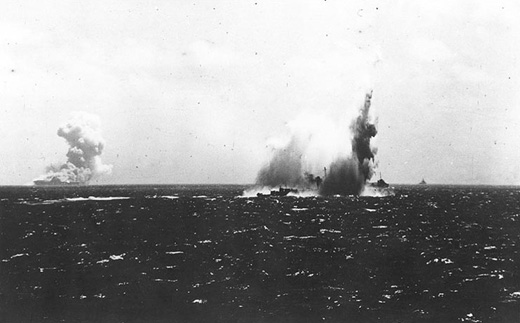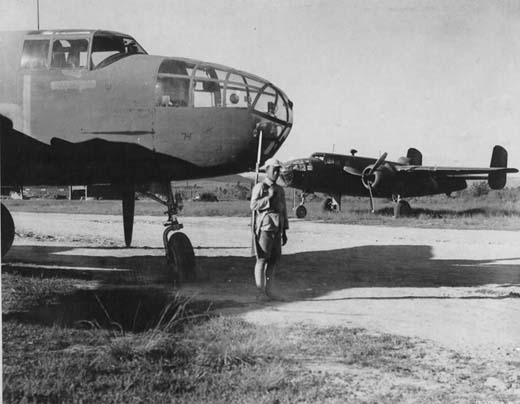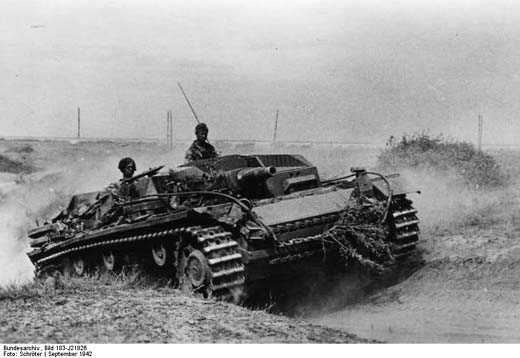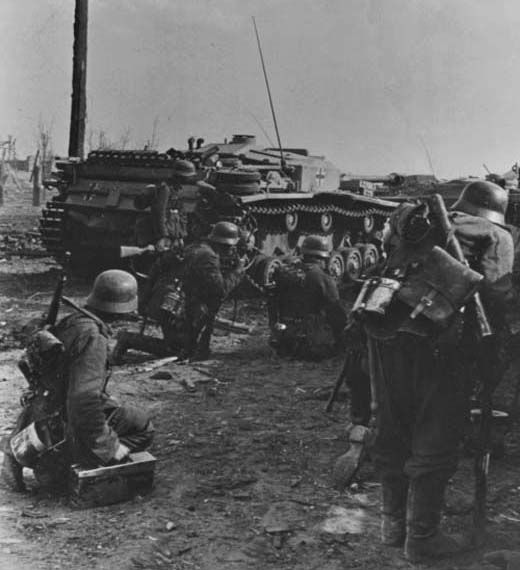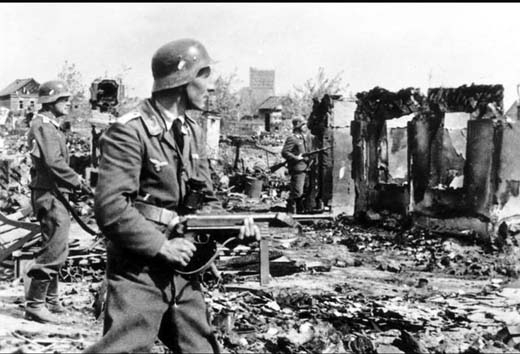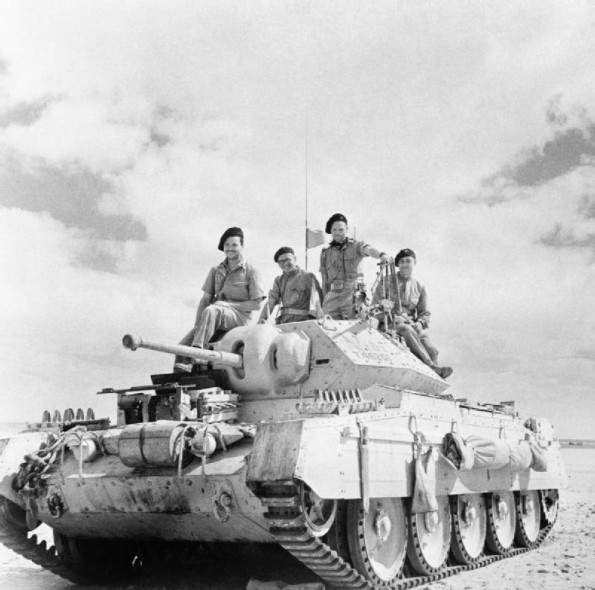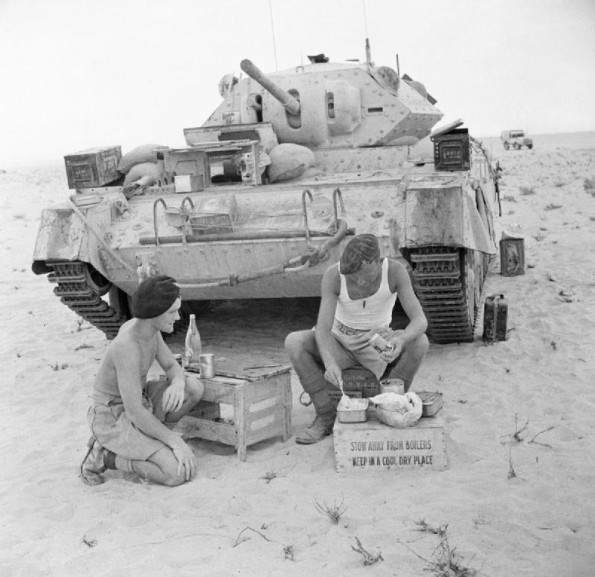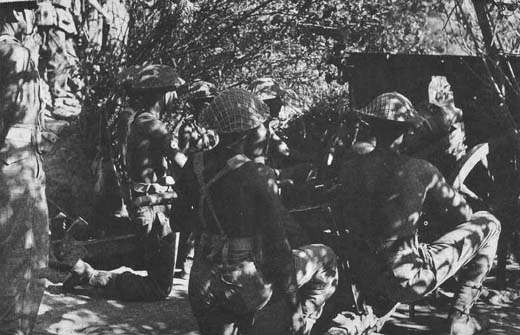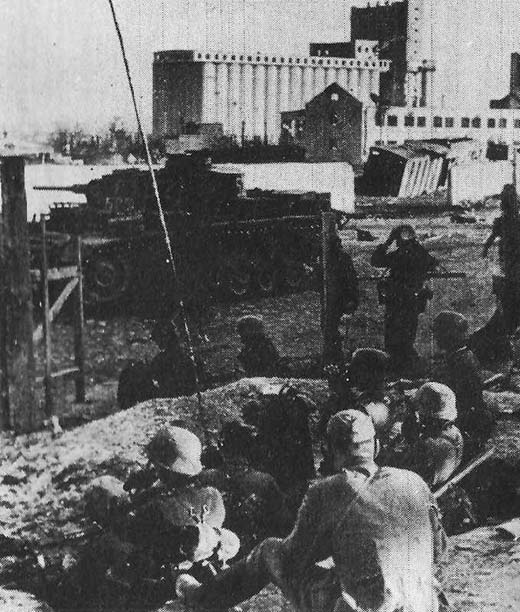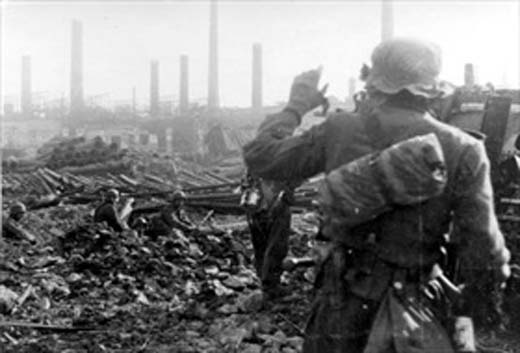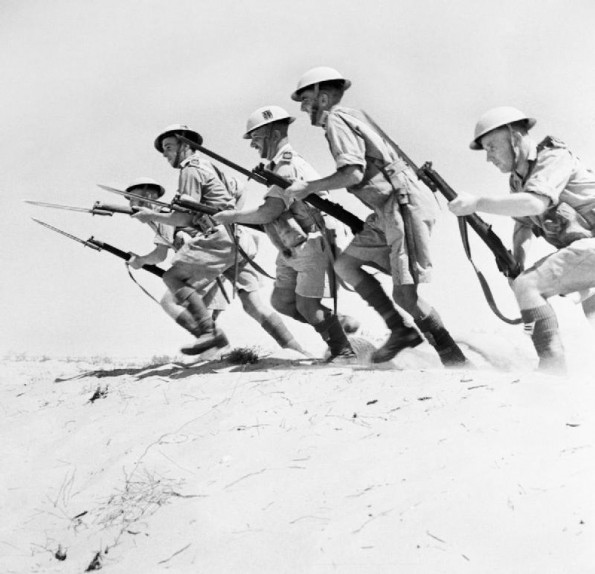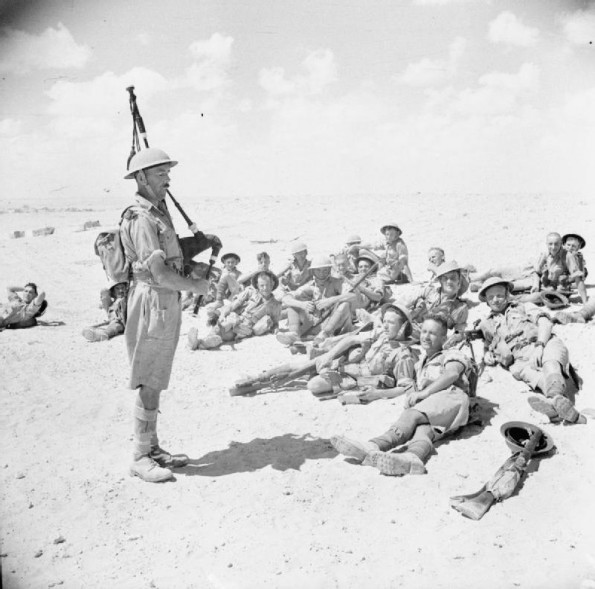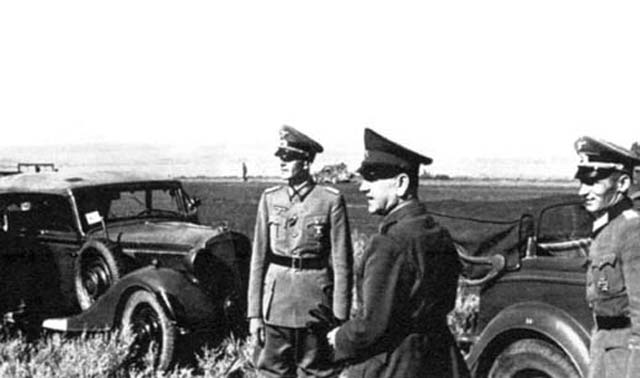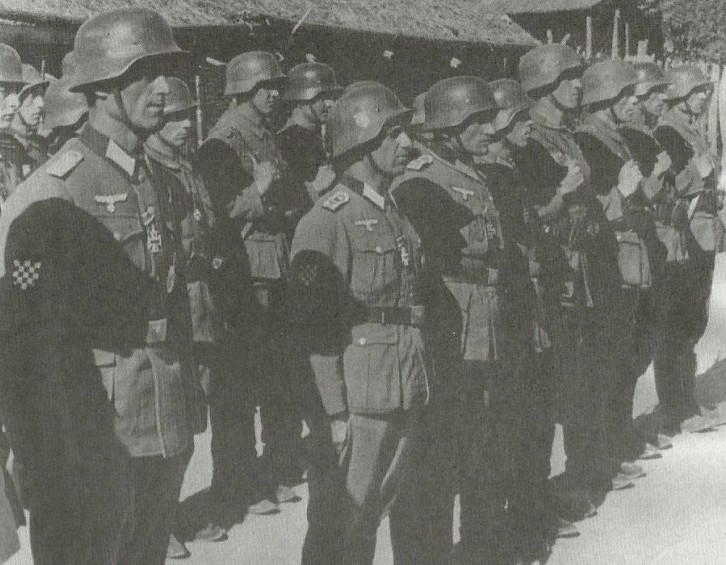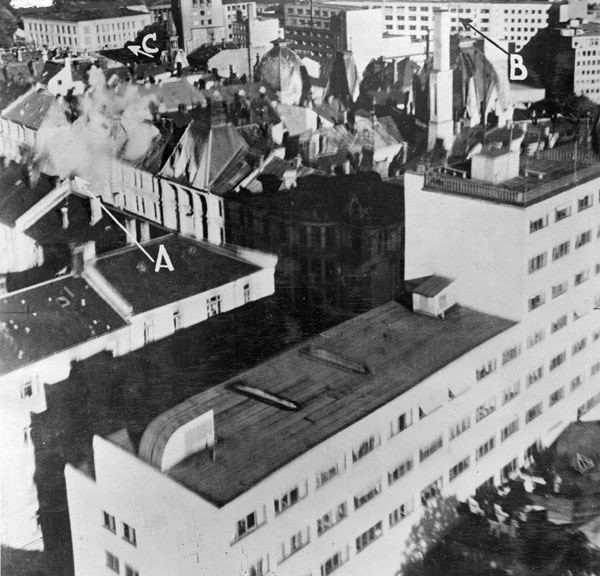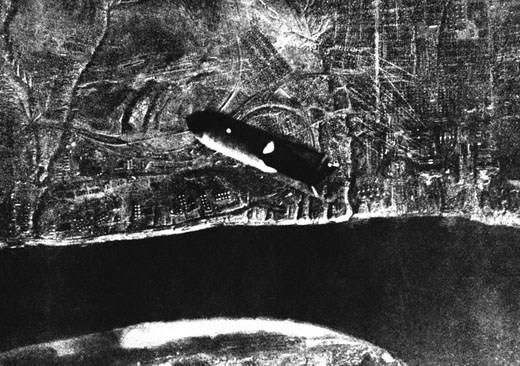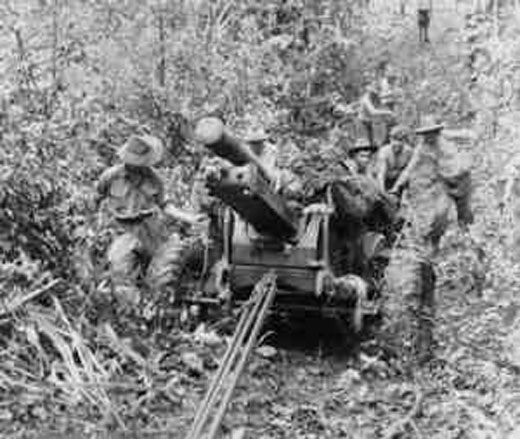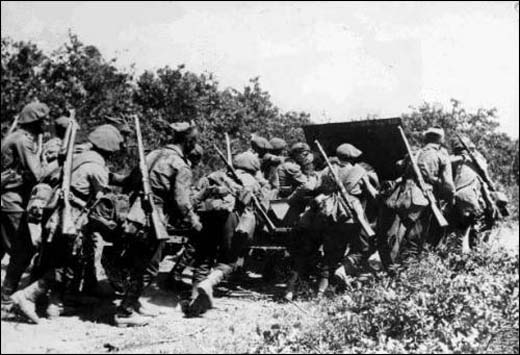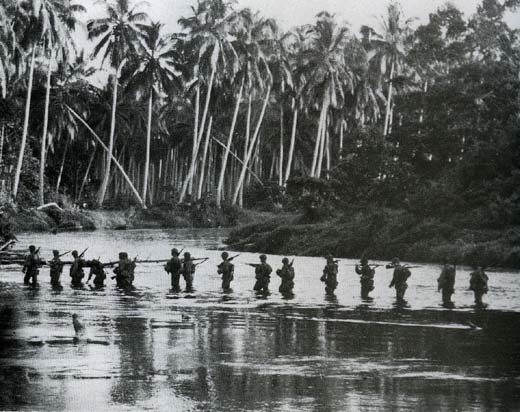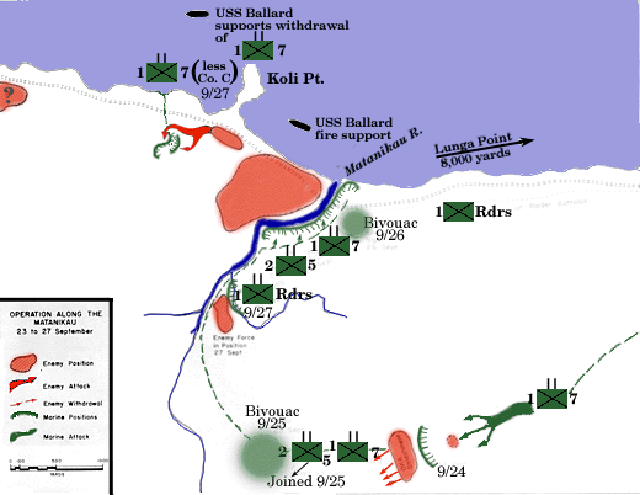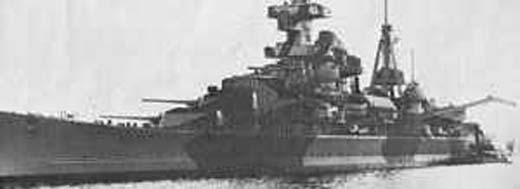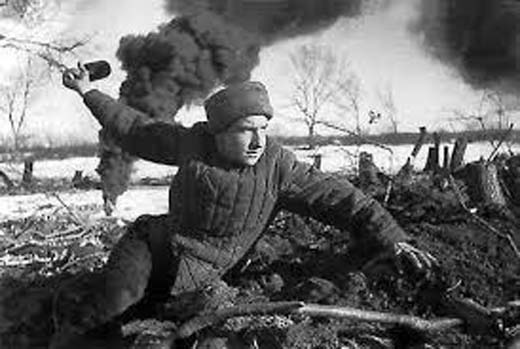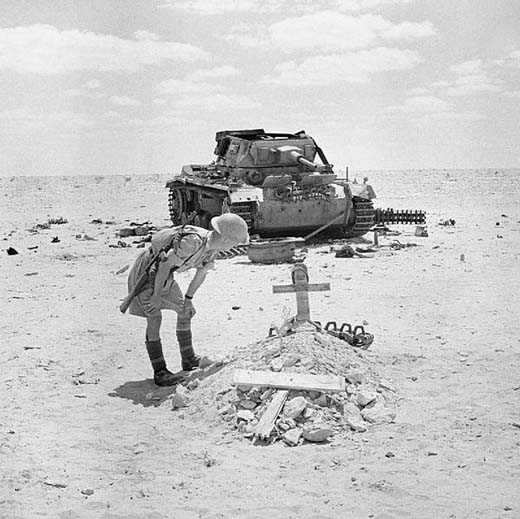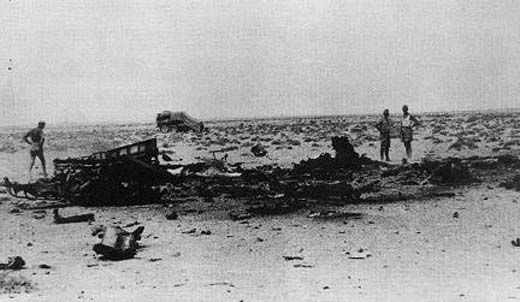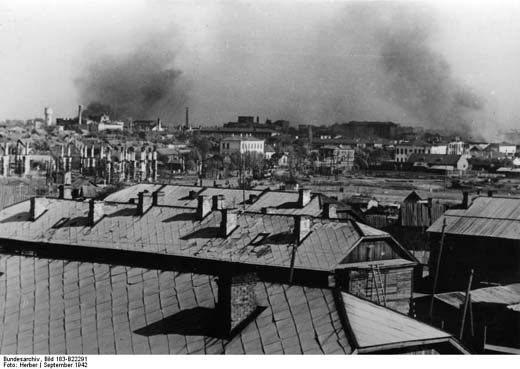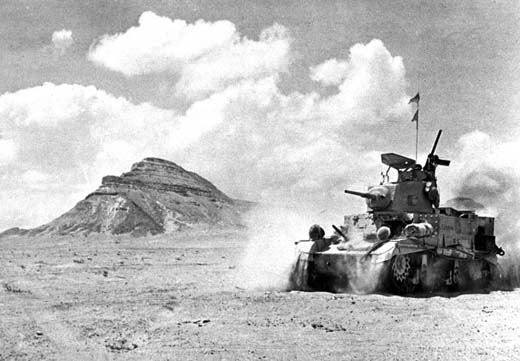Air Operations, Crete
USAMEAF B-24s attack the harbor at Candia and claim hits on 3 ships.
[Air Operations, Egypt
- 12th Medium Bomb Group B-25s accompany RAF light bombers in attacks on German Army tanks and trucks around the Alam-el-Half battle area.
- 2 57th Fighter Group P-40 squadrons escort and support various RAF missions.
Air Operations, Europe
BOMBER COMMANDDaylight Ops:
- 8 Bostons make an uneventful sweep off the Dutch coast.
- 231 aircraft of 5 types to Saarbrücken.
- Pathfinders illuminate and mark a town believed to be Saarbrücken, but in fact is Saarlouis, 13 miles to the northwest on a similar bend in the Saar River; main force bombs accurately based on the markings; heavy damage reported in the town with 52 people killed; no bombs fall in Saarbrücken.
- 1 Halifax, 1 Lancaster, 1 Stirling and 1 Wellington lost.
Air Operations, Libya
During the night, USAMEAF B-24s attack Tobruk Harbor.
[Air Operations, New Guinea
5th Air Force P-40s attack Japanese Army field headquarters at Wagga Wagga on Milne Bay. In other action P-400s strafe the village of Kokoda and Kokoda Pass in the Owen Stanley Mountains.
[Battle of the Atlantic
USN and RAF Catalinas defeat all attacks on Convoy SC-97 by U-boat group Vorwärts ('Onward'). U-756 is sunk from a depth-charge attack by the Canadian corvette Morden.
|
|
Eastern Front
There is fierce fighting in the Stalingrad area where German units have now reached the suburbs in some sectors. The Russian 62nd Army is in danger of being cut off.
Troops of the 11th Army cross from Kerch and land on the Taman Peninsula. There are both German and Romanian units involved. The port of Anapa on the Black Sea is taken by units from Army Group A.
SOUTHERN SECTORThe 4th Panzer Army pushes the 64th Army back to the southern suburbs of Stalingrad and is close to linking up with the 6th Army near Pitomnik, the 14th Panzer and 29th Motorized Divisions launching strong attacks. The 62nd Army escapes encirclement at Pitomnik, however, and falls back into Stalingrad. As the fighting around Stalingrad intensifies, the 1st Guards Army redeploys around Lozenoye to strike at the northern flank of the 6th Army between the Don and the Volga. The Soviets are short of weapons and ammunition, but Stalin will not grant any further time for preparation, ordering the attack to begin as planned.
The XLII Corps, all the remains of the 11th Army in the Crimea, crosses the Kerch strait to land in the Kuban. The XLII then joins Group Ruoff (Gen Richard) in its efforts to conquer the Black Sea coast.
Battle of the Caucasus |
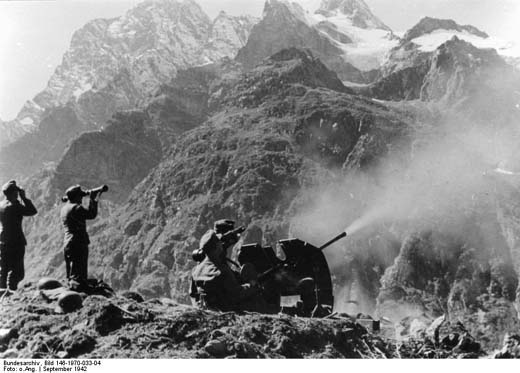 |
Guadalcanal
Troops of the 6th Naval Construction Battalion, otherwise known as 'Seabees', are landed on Guadalcanal to assist in developing the US base there. The Seabees are known for ingenious and fast engineering work under combat conditions.
[Japan, Politics
The Foreign Minister, Shigenori Togo, resigns and his office is taken over for the moment by Prime Minister Hideki Tojo. Masayuka Tani is appointed to the Foreign Ministry on September 17. The Japanese also create a 'Ministry of Greater East Asia' to centralize controls over the occupied areas.
[New Guinea
The Australians are still making a little progress at Milne Bay, though they lose ground in the Owen Stanley Mountains. Japanese units sent from Salamaua attack the Australian Kanga Force guarding the valley of Bulolo, and take Mubo.
[North Africa
The German attack today is much weaker. One Panzer Div is out of fuel and the other, 15th Panzer, makes no real progress in its attempt to take Alam el Halfa. It is driven back on the slopes by the British 22nd Armored Brigade. The Germans do, however, give the British 8th Armored Brigade an expensive lesson in the use of antitank guns. The British are preparing a counterattack to close the gap opened by the enemy on the southern flank of the XIII Corps line. The XIII Corps' losses are made good by units of XXX Corps. The X Corps is brought up from the rear area to the battlefield.
Captured German Prisoners |
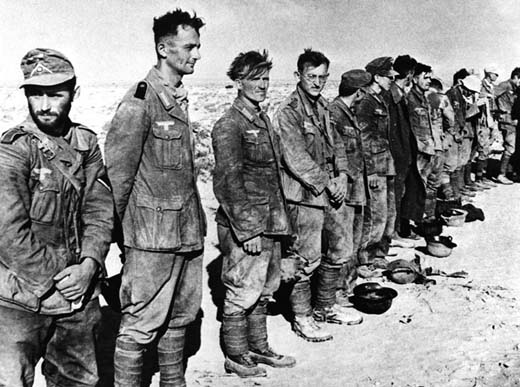 |
